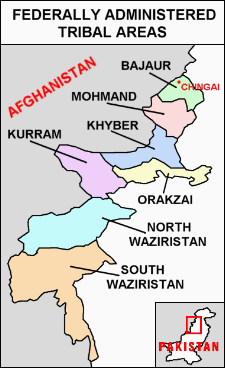The NYT reports,
“the Department of Defense has agreed so far this fiscal year to sell or transfer more than $32 billion in weapons and other military equipment to foreign governments, compared with $12 billion in 2005. The trend, which started in 2006, is most pronounced in the Middle East, . . .’
There are two reasons that this policy is not a good idea. The first is that there is good if not conclusive evidence that arms purchases are correlated with the outbreak of inter-state conflict. It is even more sure that when states purchase a lot of weapons, it impels their neighbors to do so, as well.
The bad news is that the extra arms do not cut down on internal insurgencies, either. So big arms sales reduce security, make war more likely, do nothing to put down rebellions, and drain resources from investments by the state that might actually help people.
A second reason that the NYT article is bad news is that the US may end up having to fight against its own weapons.
For instance, the Pakistani military is now flying F-16s over the northwestern tribal areas that the US has been attack. What if they just start shooting down US Predator unmanned strike craft?
The News (Pakistan) reports that
‘ According to sources, US troops boarded on two helicopters were trying to enter onto Pakistan’s areas near Angoor Adda along Pak-Afghan border when local tribes and troops of Pakistan army resisted the move and opened fire, forcing US helicopters to return. ‘
Pakistan is obviously pushing back against Bush’s July authorization of US strikes and attacks on targets inside Pakistan (whereby W. adopted a policy first argued for by Barack Obama).
In fact, Prime Minister Yousuf Raza Gilani called President Asaf Ali Zardari on Sunday in Dubai to discuss with him the “need to defend Pakistan’s sovereignty,” which is to say, the need to engage invading US troops in battle!
Howard LaFranchi of CSM reveals the reason for Bush’s about-face:
‘ The administration has debated the use of commando raids in Pakistan for years, but the tipping point came in July, as relations with Pakistan’s civilian and military leaders deteriorated, intelligence sources say. The “kicker,” according to one source who requested anonymity over the sensitivity of the issue, was two July events: the bombing of India’s embassy in Afghanistan’s capital, Kabul, an act that US intelligence officials concluded was aided by Pakistani intelligence operatives; and a July 13 attack on a US military outpost in eastern Afghanistan that killed nine US soldiers. The outpost attack was carried out by Taliban militants who had crossed over the nearby border from Pakistan.’
He also quotes Pat Lang, to whom American bombing of Pakistan looks an awful lot like the spillover of the Vietnam War onto Cambodia under Nixon.
Myra McDonald asks if the US is at war with Pakistan?
OK, so at the same time the US is invading South Waziristan because Pakistan allegedly won’t do it, the Pakistani military is killing 32 people in Bajaur with helicopter gunships, including 3 women. 300,000 residents of Bajaur had fled, then started tor return because of a Ramadan ceasefire, but now are fleeing again.
The way I make sense of all this is that the Pakistani military has feuds with some Pushtun tribes, for instance maybe the Tarkalanis in the northern FATA of Bajaur, which are in rebellion against the Pakistani government.
It also has a feud with the Mahsuds of South Waziristan. In fact, Baitullah Mahsud is a leader of the Tehrik-i Taliban and was accused of assassinating Benazir Bhutto. Pakistani troops have repeatedly fought the Mahsuds.
But maybe one sept of the Mahsuds has gone over to become assets of the Pakistani Inter-Services Intelligence. And the Pakistani military sometimes sends this clan from the Mahsud over the border to Afghanistan to do its bidding.
So the Pakistani high command can always point to all it is doing to fight terrorism, how many insurgents it has killed and troops it has lost, and it is perfectly true. But then President Hamid Karzai and Delhi can complain that Islamabad is facilitating Taliban terrorism in Afghanistan, and, well, maybe that is true, too.
So presumably if the US predators or special ops teams would hit Bajaur, or the rebellious part of South Waziristan, it wouldn’t be such a big deal for the Pakistani elite. The objectionable thing is that the US is hitting Islamabad’s Taliban.
Or maybe it is even more complex, with the high command in Islamabad locked in combat with the Mahsuds of South Waziristan but the Pakistani frontier constabulary sympathizing with them.
The oddest thing.




 © 2025 All Rights Reserved
© 2025 All Rights Reserved